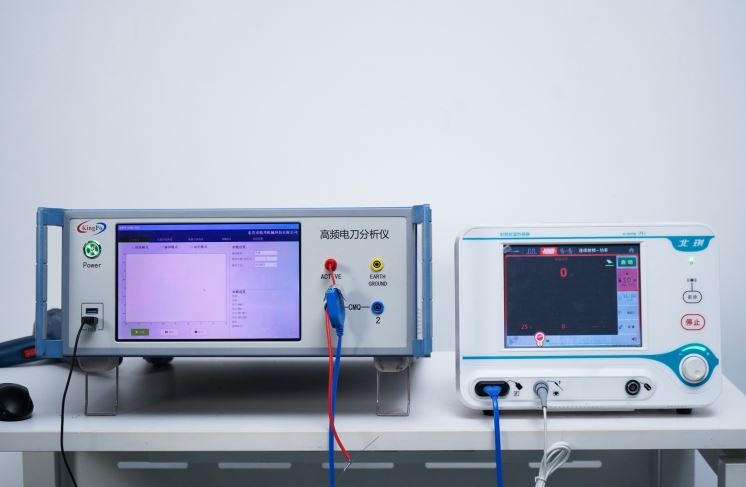What Is an Electrosurgery Analyzer and How Does It Work? A Simple Guide

In the world of healthcare, precision and safety are top priorities. Whether it’s a routine procedure or a complex surgery, every piece of equipment must perform at its best. One essential tool that often works behind the scenes to ensure the safety and effectiveness of surgical devices is the electrosurgery analyzer.
If you’ve ever wondered, “What is an electrosurgery analyzer, and why is it important?”—you’re not alone. This blog breaks it down in plain English. No complicated terms, just easy-to-understand insights into how this tool supports better patient care.
Understanding Electrosurgery in Simple Terms
Let’s start with the basics. In many modern surgeries, doctors use electrosurgical units (ESUs). These machines use high-frequency electrical currents to cut through tissue or stop bleeding. It’s like a precise electrical scalpel.
Now, as amazing as that sounds, these machines must be tested regularly to ensure they’re working just right. That’s where the electrosurgery analyzer comes into play.
What Is an Electrosurgery Analyzer?
An electrosurgery analyzer is a test device used by biomedical technicians and healthcare professionals to measure the output of electrosurgical units. Think of it as a “health checker” for the equipment used in surgeries. Just like you wouldn’t drive a car with faulty brakes, hospitals don’t want to use surgical tools that could malfunction.
Here’s what it can check:
-
The amount of electrical power coming out of the ESU
-
The accuracy of cutting and coagulation modes
-
Whether the patient return electrode safety system is working properly
It helps confirm that everything is safe and within the expected range before a surgical procedure takes place.
Why Is It Important?
Let’s imagine you’re baking a cake and your oven says it’s set to 350°F, but it’s actually heating to 450°F. Your cake could burn before it’s even baked properly. In a similar way, if an electrosurgical unit is outputting too much power—or too little—it could harm the patient or fail to do its job during surgery.
That’s why testing with an electrosurgery analyzer is so important:
-
It helps prevent injuries caused by inaccurate power delivery.
-
It ensures equipment performs correctly each and every time.
-
It provides peace of mind to the surgical team.
When and Where Is It Used?
An electrosurgery analyzer is commonly used in:
-
Hospitals – During routine maintenance checks of surgical equipment.
-
Medical device manufacturing – To test new electrosurgical devices before they go to market.
-
Clinical engineering departments – To troubleshoot and verify the accuracy of equipment.
These analyzers are often portable, which means technicians can carry them around the hospital to test machines in different departments.
What Features to Look for in an Electrosurgery Analyzer
Not all analyzers are the same. Some offer advanced digital displays and memory storage, while others are simpler but just as effective. Here are some helpful features that make a difference:
-
User-friendly interface – Easy buttons, menus, and displays make it faster to use.
-
Accurate readings – Precision is key. A good analyzer gives reliable measurements every time.
-
Portability – Lightweight models make it easier to take around busy hospital floors.
-
Multiple test modes – Including both monopolar and bipolar testing options.
-
Safety alerts – Some analyzers can alert the user if something is out of range.
Tips for Using an Electrosurgery Analyzer Correctly
Working with medical equipment can seem intimidating, but using an electrosurgery analyzer doesn’t have to be. Here are some practical tips to keep things simple:
-
Always read the manual – Even if you’ve used one before, each model might have its own quirks.
-
Start with visual checks – Inspect cords, plugs, and connections before running any tests.
-
Use test loads correctly – These simulate the patient’s body and help ensure real-life accuracy.
-
Record the results – Keep a log of test results for maintenance history and compliance.
-
Calibrate regularly – Like any measuring tool, analyzers need to be calibrated to stay accurate.
Real-Life Example to Make It Relatable
Let’s say you’re responsible for safety checks in a surgical center. One day, a doctor reports that the electrosurgical device doesn’t seem to be working as expected. Instead of replacing the machine right away, you bring out your electrosurgery analyzer.
You run the test, and sure enough—it shows the power output is lower than what it should be. A small internal setting had shifted over time. You adjust it, retest, and the results are back in range. Surgery goes ahead as planned, and a patient receives safe, effective care—all thanks to timely testing with your analyzer.
Final Thoughts: Why You Should Care
You don’t have to be a surgeon or engineer to appreciate how essential accurate tools are in healthcare. The electrosurgery analyzer may not be the star of the show, but it plays a critical supporting role that helps save lives and prevent harm.
Just like smoke detectors quietly protect your home, these analyzers quietly protect patients by making sure surgical tools are safe and ready to perform. So next time you hear about high-tech medical equipment, remember the humble analyzer doing the behind-the-scenes work.
Whether you’re just curious, training as a biomedical technician, or working in hospital maintenance, knowing how and why this tool is used puts you one step ahead in the world of medical safety.






Leave a Comment